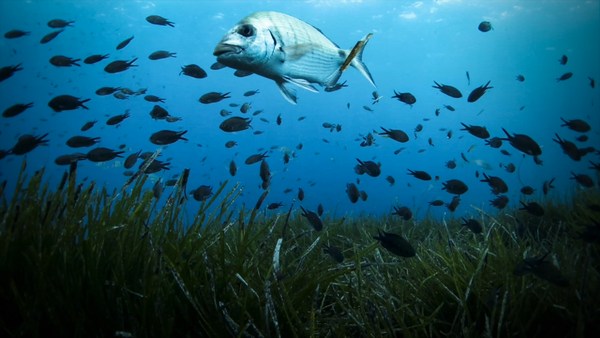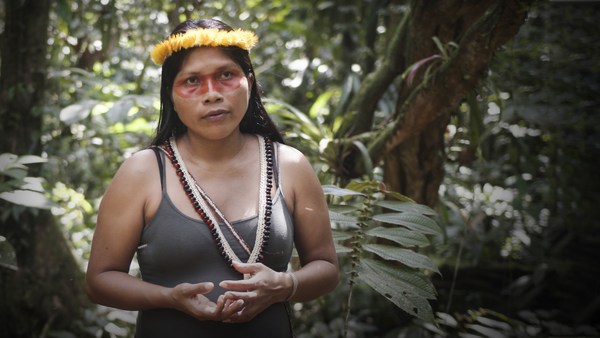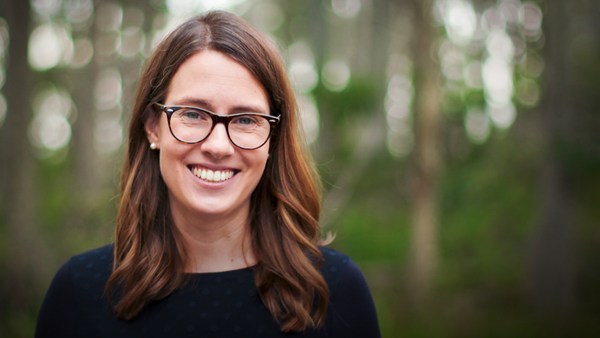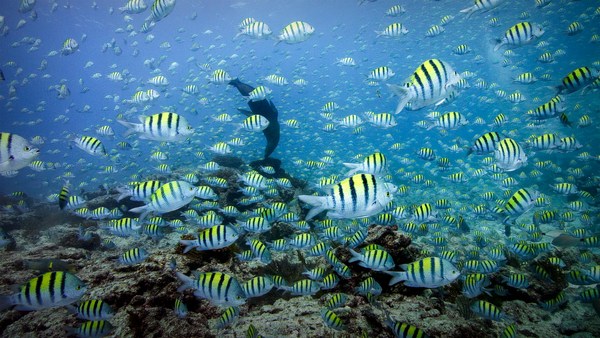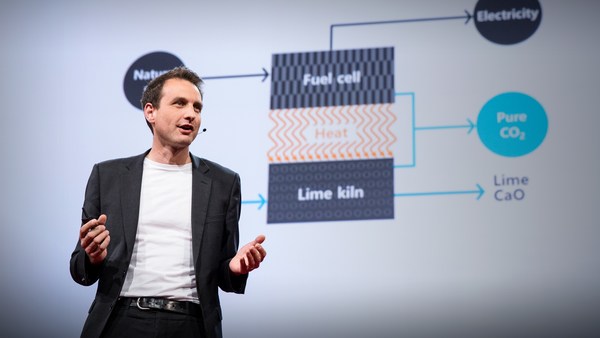I'm here to unveil a new carbon-removal technology, one out of sight and uncelebrated. Meet our champion: seagrass. A very unlikely champion, but yet a remarkable power of carbon removal.
Seagrasses occupy only 0.1 percent of the seafloor, but they remove one-third of all of the carbon that gets sequestered in the seafloor annually. They are no ordinary seagrasses, and yet, we didn’t know much about them. When I started my journey of research and science with seagrasses about four decades ago, we knew that they were flowering plants that had adapted to grow and colonize the ocean, but we didn’t know how amazing the adaptation [were] required to [be to] achieve this feat. In fact, only seven years ago, we published the first genome sequence of a seagrass, and we were mesmerized at the amazing adaptations that were required to be able to colonize the ocean. And now we understand why only 17 species from among 300,000 or so species of flowering plants that are present in the biosphere have conquered the ocean.
Seagrasses grow by extending a rhizome -- that is a subterranean stem that elongates at rates of about one centimeter to about five meters per year, and they branch and extend along the seafloor, forming large clones. We knew that clones can be quite large, but we were surprised when, in the Mediterranean, we found, 10 years ago, a clone that occupied 15 kilometers; that is the size of the island of Manhattan. And this is a very remarkable clone, but we also calculated that the seed that gave rise to this clone germinated in the seafloor 200,000 years ago. This is one of the oldest living things on the planet, and the meadow where this megaclone is growing is now recognized as a marine World Heritage site. Off the island of Ibiza, this meadow occupies about 800 square kilometers and is now recognized as a protected area, not just because of the long life span of the clones but also because of the biodiversity it supports.
But we also found that this meadow is also the champion of carbon sequestration in the biosphere, with one hectare of this seagrass sequestering as much carbon as 15 hectares of pristine Amazonian forest.
Finding [out] how this is possible was a path of discovery. First, the canopies of these plants are very large, and they are among the most productive ecosystems on Earth, pumping carbon dioxide into organic matter at amazing rates, that produce a lot of carbon, much of that being sequestered in the soils as rhizomes and roots that are very hard to decompose. The large canopies also form a web that dissipates energy and filters out particles from the flow that settle, then, in the seafloor, protected from being resuspended by the protective cover of the canopy. And these particles in the seafloor decompose very slowly, because the seafloor and the soils of seagrasses are devoid of oxygen, and that slows down microbial decomposition. So this carbon accumulates and is preserved in the soils.
And there's one more reason why these seagrass meadows are so effective at sequestering carbon. And it’s that, unlike forests, where carbon in the soil gets emitted back to the atmosphere with wild forest fires -- which, unfortunately, are becoming more frequent with climate change -- there are no fires underwater, so the carbon that settles in the soils of seagrass is safe and accumulates over thousands of years, safely.
In fact, seagrasses not only grow along the seafloor -- they also raise the seafloor upwards at rates of one to four millimeters per year, and they do so, over centennial timescales, to the point that these seagrasses form reefs, such as this four-meter-tall reef of seagrass peat that is found in the Mediterranean. And this is not the tallest seagrass reef that has been discovered. My colleagues have dug out a seagrass reef that is 12 meters tall, three times this size. Just imagine the amazing amount of carbon that is being held in these seagrass reefs. But it is not only carbon. The seagrass reef protects the shorelines, protects our infrastructure, protects our property and protects our lives. And this protection becomes particularly important at a time when climate change is raising sea levels and is also leading to increasingly strong storms and cyclones. So very often, seagrasses form the first line of defense for the shorelines.
So as we became aware of the important role of seagrass in carbon sequestration, and also in defending our shorelines, then we were almost too late to benefit from those protections, because, sadly, we had lost a lot of seagrass in the ocean. In the 1930s, disease wiped out seagrass along both sides of the Atlantic. And as they were starting to recover, sewage input and agricultural runoff led to mortality of seagrass along the shores of all continents, and that was aggravated further with mechanical damage, such as the dragging of this anchor from a megayacht in the Mediterranean that is plowing away this millenary seagrass, exposing the sediment and resuspending it so that it will be emitted back into the atmosphere as carbon dioxide. And that was compounded with dredging, trawling and coastal works that impacted seagrass.
So by the end of the 20th century, we calculated that one-third of the known seagrass areas in the ocean had been lost. And yet efforts to protect them became urgent. But we can only protect what we know, and our knowledge of the distribution and area of seagrasses in the ocean is still very poor. Our estimates range between 150,000 square kilometers to one million square kilometers. And narrowing down this uncertainty is very, very challenging. In fact, it can only be done by scuba divers, because seagrass meadows cannot be resolved from satellites or from airborne sensors, because the deeper parts cannot be differentiated from other types of grounds and seafloors.
So we are actually partnering with much better swimmers than we are, but that share our interest in seagrass meadows. We are partnering with green sea turtles, which are mostly feeding on seagrasses, so we track them with satellite devices to find out where their feeding grounds are, and by doing this, we are finding and discovering new seagrass meadows in the Indian Ocean and the Red Sea, which were poorly studied. And in the Bahamas, we are now partnering with tiger sharks, because we found that in the Bahamas, tiger sharks spend about 70 percent of their time cruising over seagrass meadows. And we instrumented, last year, for the first time, a tiger shark with 360-degree cameras, which are sitting on the fin of the shark so that when the cameras pop up to the surface, then we retrieve the footage, and we can ascertain in which areas of the track there were seagrasses. So using tiger sharks as partners, we have now discovered that the Bahamas' banks -- which a US astronaut, Scott Kelly, deemed to be the most beautiful sight from space when he shared this photo that he took from space -- is actually the largest seagrass meadow in the ocean.
And we are now growing policies to protect seagrasses and improve water quality so that we can recover seagrasses. And I tell you what, these policies are working. And over the last two decades, we have seen a rebound of seagrasses following almost a century of sustained decline. Now seagrasses are starting to expand and recover along the shores of Europe, North America, Japan, Australia and China. And this is only the beginning, because we can do more than just protect seagrasses and wait for them to come back. We can engage in active restoration, such as my colleagues in Virginia have done. And in the early years of this century, they released 7.5 million seeds of seagrasses in South Bay, in the coastal waters of Virginia. And 16 years later, the seagrass has expanded to 20 square kilometers, and by now it has covered, already 36 square kilometers. The amount of carbon that this restored seagrass meadow has trapped is so important that it has led the Commonwealth of Virginia, that owns these waters, to pass a bill that regulates how carbon grades from seagrass restoration should be reinvested back in further restoration of seagrass, and also in improving our understanding of seagrass ecology.
But seagrasses are more than just carbon. They also have seeds, and my friend and three-star Michelin chef, Ángel León, has released this year an important development, which is that these seeds can be consumed by humans as marine rice. And this is a wonderful crop, one that does not require arable land, fresh water, neither fertilizers nor herbicides or pesticides. And because we only need to clip the flower and shoots where the seeds are, we don't need to harvest the plant, so the meadow continues to sequester carbon, promote biodiversity and defend our shorelines.
And these findings, in the past decade, have made me believe that it's time to ditch the idea that seagrasses are the ugly ducklings of environmental conservation, as I nicknamed them 15 years ago, frustrated, because at that point, not even conservation NGOs cared. Now we know that seagrasses are beautiful swans -- which actually eat seagrass leaves and rhizomes -- and healthy seagrass meadows are harbingers of a healthy ocean. And I am inspired by the tide change from a century of loss of seagrass to two decades of recovery to imagine that we can actually do better.
We can expand this success story to the rest of marine life, and last year, we published a paper in the journal "Nature," where we pledged that it's possible to recover and rebuild the abundance of life in the ocean by 2050. Just imagine that it is within our [grasp] to hand over a healthy ocean to our children and grandchildren. And as we do so, we can also step up in our race to stabilize our climate.
Thank you.
(Cheers and applause)
